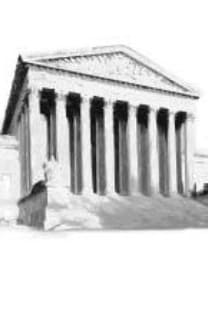Hareketin Fenomenolojisi ve Ontolojisi: Patočka’nın Aristoteles Okuması
Sorusu olmayan bir fenomenoloji düşünülemez ve fenomenolojik araştırmanın verimliliği ancak ortaya attığı sorularla ölçülebilir. Husserl ve Heidegger’in öğrencisi Jan Patočka’nın ilgilendiği temel soru bütünlük olarak dünya ve onu oluşturan hareketlerdir. Bu bağlamda yol gösterici argümanımızı şu şekilde ortaya koyabiliriz: Patočka, Aristoteles’in hareket teorisini radikalleştirerek, Husserl ve Heidegger’in ötesine uzanan bir ontolojik istikamette, dünyanın varlık anlamını kozmolojik tezahür hareketi olarak belirler. Şu halde öncelikle Patočka’nın, Husserl ve Heidegger’in arasında bir tür sentezi mümkün kılacak ve söz konusu Alman düşünürlerin felsefelerinde görünür olmayan ortak bir zemini açığa çıkaracak fenomenolojik felsefe projesini inceleyeceğiz. Ardından Aristoteles’in hareket teorisi üzerine Patočka’nın ortaya koyduğu yorumu ele alacağız. Söz konusu okuma Patočka’nın Husserl ve Heidegger’de üzeri örtülü bir biçimde devam ettiğini düşündüğü öznelcilik sorununun aşılmasında etkili olacak. Son olarak ise Patočka’nın Aristoteles’in hareket teorisini nasıl radikalleştirdiğini göreceğiz. Böylece tezahür hareketi olarak kozmolojik hareket teorisi açıklığa kavuşacak.
Phenomenology and Ontology of Movement: Patočka Reader of Aristotle
There is no phenomenology without problems and the fertility of phenomenological research can only be determined by the questions it raises. A disciple of Husserl and Heidegger, Jan Patočka is interested in the question of the world as a whole and the movements that compose it. The research hypothesis which guides us is then the following: we believe that by radicalizing Aristotle’s theory of movement, Patočka thematizes the sense of being of the world as a cosmological movement of manifestation, following the path of an ontology beyond Husserl and Heidegger. We will first present the phenomenological philosophy of Patočka as a form of synthesis between Husserl and Heidegger. Then, we will focus on the Patočkian interpretation of movement in Aristotle. We will see how Patočka recaptures Aristotelian thought as a way to overcome the subjectivist impasse which is at work in Husserl and Heidegger. Finally, we will thematize the Patockian radicalization of Aristotle’s theory of movement. This will allow us in particular to highlight a theory of cosmological movement as movement of manifestation.
Keywords:
Phenomenology, Aristotle, Movement, Individuation World,
___
- ARISTOTE (1990, 1ère éd. 1926). Physique, texte établi et trad. fr. H. Carteron, Paris : Les Belles Lettres.
- ARISTOTE (1974, 1ère éd. 1934). De Anima, trad. fr. J. Tricot, Paris : Vrin.
- HEIDEGGER, Martin (1986). Être et Temps, trad. fr. François Vezin, Paris : Gallimard,
- HEIDEGGER, Martin (1985). Les problèmes fondamentaux de la phénoménologie, trad. fr. J-F. Courtine, Paris : Gallimard.
- HUSSERL, Edmund (1950). Idées directrices pour une phénoménologie, trad. fr. Paul Ricoeur, Paris : Gallimard.
- HUSSERL, Edmund (1992). Méditations cartésiennes, trad. fr. Gabrielle Peiffer et Emmanuel Levinas, Paris : Vrin.
- HUSSERL, Edmund (1976). La Crise des sciences européennes et la phénoménologie transcendantale, trad. fr. G. Granel, Paris : Gallimard.
- PATOČKA, Jan (1976). Le monde naturel comme problème philosophique, trad. fr. J. Danĕk et H. Declève, La Haye : Nijhoff.
- PATOČKA, Jan (1991). « Martin Heidegger, penseur de l’humanité » in Epokhè n o 2, Grenoble : Millon
- PATOČKA, Jan (1997). Platon et l’Europe. Séminaire privé du semestre d’été 1973, trad. fr. E. Abrams, Lagrasse : Verdier.
- PATOČKA, Jan (1988). Le monde naturel et le mouvement de l’existence humaine, éd. et trad. fr. E. Abrams, préface de H. Declève, Dordrecht/Boston/London: Kluwer Academic Publishers.
- PATOČKA, Jan (1995). Papiers phénoménologiques, éd., intr. et trad. fr. E. Abrams, Grenoble : Million.
- PATOČKA, Jan (2011). Aristote, ses devanciers, ses successeurs, trad. fr. E. Abrams, Paris : Vrin.
- RODRIGO, Pierre (1995). Aristote, l’eidétique et la phénoménologie, Grenoble: Millon.
- Yayın Aralığı: Yılda 2 Sayı
- Yayıncı: Bursa Uludağ Üniversitesi
Sayıdaki Diğer Makaleler
Zihin Felsefesinde Fizikselin Tanımı Sorunu
Megaralı Philon’da Koşullu Önerme Anlayışı ve Modern Mantıkta Maddi İçerme Kavramının Oluşumu
Salgın Hastalıkların Karşısında Varoluşun Dayanağı Olarak Dayanışma
Atina Demokratia’sının Tragedyası
Boole Cebiri ve Aristoteles'in Mantığı
Dinin Bilimsel Çalışmalara Etkisi: Ortaçağ Astronomisi (VI. YY – XIII. YY) Örneği
Ekin Kaynak ILTAR, Rabia AKÇORU
Bilgi ve Değer Bağlamında “İyi Tasarım” Kavramının İzinin Sürülmesi
Murad BABADAĞ, Oğuz HAŞLAKOĞLU
Toplumsallığa İlişkin İki Farklı Görüş: Rousseau versus Rousseau
Yaygın Zenon Okumasının Bir Eleştirisi
